How Do Bees Pollinate? An Exploration of Ecological Dynamics
- February 5, 2024
- 0 comment
Bees stand as irreplaceable agents within the natural world, their role as pollinators extending far beyond the mere production of honey. These industrious insects are fundamental to the propagation of a myriad of plant species, particularly fruits, vegetables, and flowers, upon which the global food chain heavily relies. By facilitating the transfer of pollen from one flower to another, bees not only ensure the continuation of plant species but also lay the foundation for a complex web of ecological relationships.
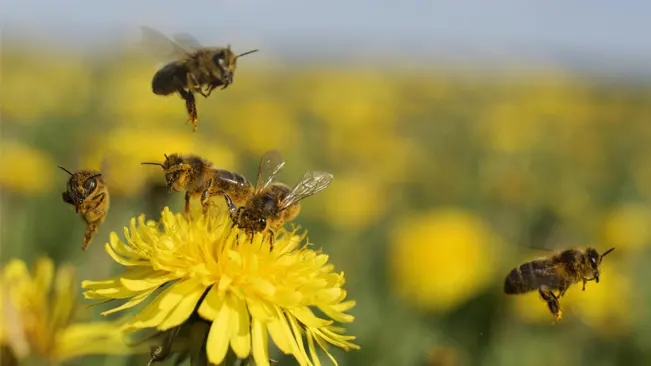
This intricate interplay between bees, plants, and other organisms fosters a diverse wildlife ecosystem, promoting biodiversity and ecological resilience. The ripple effect of their pollination work supports a wide array of life forms, highlighting the profound impact bees have on maintaining ecological balance and sustaining life as we know it.
Understanding Pollination
Pollination is a critical biological process that plays a central role in the reproductive cycle of flowering plants. It involves the transfer of pollen grains from the anther, the male part of a flower, to the stigma, the female part, which may be located within the same flower or in a different one. This transfer can occur through various means, including wind, water, and animal pollinators such as bees, birds, and butterflies.
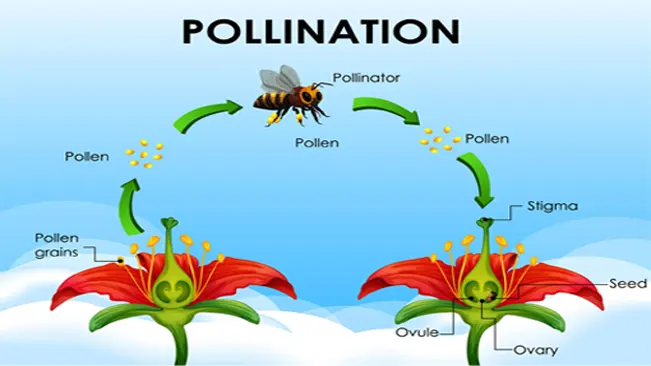
The successful delivery of pollen enables fertilization, leading to the production of seeds and, subsequently, the next generation of plants. This process is not only fundamental for the survival of individual plant species but also underpins the diversity and resilience of ecosystems by facilitating the production of fruits and seeds that serve as food for a wide range of animals, thereby promoting a healthy and balanced environment.
The Process of Bee Pollination
How Bees Find Flowers
Bees find flowers through a remarkable combination of visual cues, olfactory signals, and even the detection of electrical fields. They are attracted to the vibrant colors and distinct patterns of flowers, which often stand out against the green backdrop of foliage. Many flowers have evolved to display ultraviolet markings, invisible to the human eye but highly visible to bees, which guide them to the flower’s nectar source.
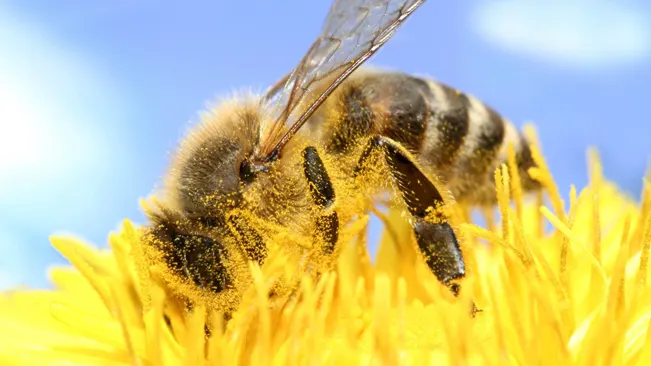
Additionally, the enticing scents emitted by flowers serve as olfactory beacons, drawing bees from a distance. Bees also have the ability to sense the slight electrical charge that flowers carry, which changes when another bee has recently visited, providing information about the freshness of the flower’s nectar and pollen reserves. This multi-sensory approach enables bees to efficiently locate and identify flowers, even over considerable distances, making them highly effective pollinators.
The Role of Nectar and Pollen
Nectar as an Energy Source
Nectar, a sweet liquid secreted by flowers, is a critical source of energy for bees, rich in the essential sugars they require for their high-energy lifestyle. When bees forage, they use their long, specially adapted tongues to suck nectar from flowers, storing it in their “honey stomachs,” a separate compartment from their actual stomach. Upon returning to the hive, the nectar is regurgitated and passed between worker bees, each time being further processed by enzymes in the bees’ saliva.

This process, combined with the evaporation of water from the nectar within the hive’s warm environment, gradually transforms the nectar into honey. Honey, with its high sugar content, serves as the primary food source for bees, offering vital sustenance to support their activities within and outside the hive, including foraging, heating the hive, and nurturing their young. This remarkable conversion of nectar to honey not only underscores the efficiency of bees as pollinators but also highlights their intricate social structure and the collaborative nature of their survival strategies.
Pollen and Bee Nutrition
Pollen, collected from the stamens of flowers, stands as a nutritional powerhouse for bees, densely packed with proteins, fats, vitamins, and minerals essential for their diet. When bees visit flowers to gather nectar, they also brush against the pollen, which adheres to their bodies, particularly to the specialized structures called pollen baskets or corbiculae on their hind legs. This collected pollen is then transported back to the hive, where it is used as a primary food source, especially for the larvae. The protein and fat content of pollen is crucial for the development and growth of bee larvae, providing the necessary nutrients to ensure their maturation into healthy adults.
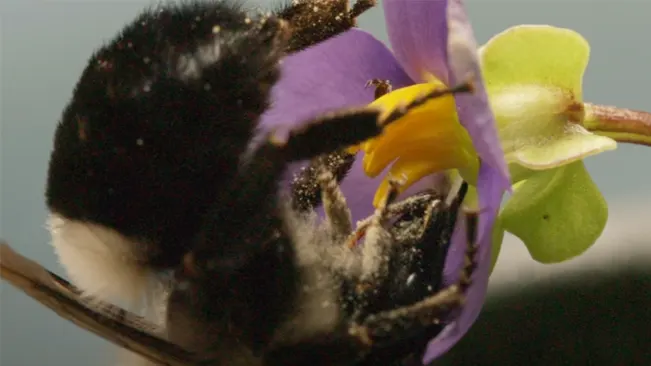
This cycle of pollen collection and consumption is not only vital for the nourishment and continuation of the bee colony but also for the pollination process, as pollen is transferred between flowers during the bees’ foraging activities. Thus, the collection of pollen serves a dual purpose: feeding the next generation of bees and contributing to the reproductive success of plants, showcasing the intricate interdependence between bees and their floral resources.
The Mechanics of Pollination by Bees
Pollen Transfer Mechanisms
During their daily quests for nectar and pollen, bees inadvertently become champions of plant reproduction, seamlessly weaving the web of life as they meander from flower to flower. The very design of their bodies, equipped with structures adept at gathering pollen, such as the specialized pollen baskets, ensures that as they probe flowers for sustenance, they’re also dusted with pollen. This pollen, carried unwittingly from the anthers of one bloom to the stigmas of another, facilitates the vital process of cross-pollination. Such serendipitous pollen transfer is not merely a byproduct of their search for food but a fundamental act that drives the genetic diversity and continuity of numerous plant species. This delicate dance between bees and blooms highlights the profound symbiosis that sustains the tapestry of our ecosystems, underscoring the essential role bees play not just in pollination but in fostering biodiversity and ecological resilience.
The Significance of Bee Behavior in Pollination
Bees exhibit behaviors like ‘buzz pollination’ that enhance pollination efficiency. In this method, bees hold onto flowers and vibrate their muscles, creating a buzz that releases pollen grains from the anthers. This specialized technique is highly effective for flowers that require specific vibration frequencies to release pollen, demonstrating a unique plant-pollinator adaptation. Buzz pollination is a testament to the deep symbiosis between bees and plants, underlining the bees’ vital role in plant reproduction and ecosystem diversity.
Types of Bees and Their Pollinating Roles
Honeybees stand out as key pollinators, vital to both agriculture and natural ecosystems. Their efficient foraging and communication enable the pollination of a wide range of plants, crucial for crop production and wild plant diversity. This makes them essential for global food security and ecosystem health. Their contribution, valued in billions, underscores their pivotal role in sustaining biodiversity and supporting the agricultural economy, highlighting the indispensable link between honeybees, human sustenance, and environmental balance.

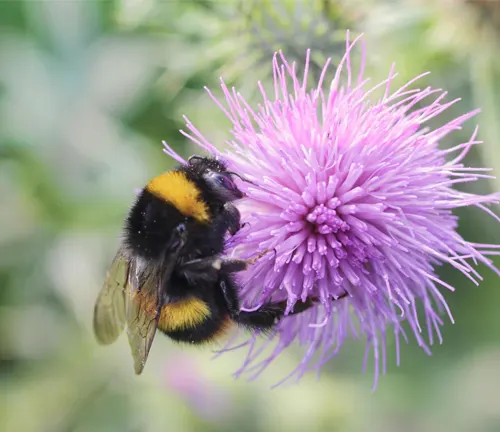
Bumblebees stand out as pollinators with their unique ‘buzz pollination’ skill, where they vibrate their muscles to dislodge pollen from certain flowers, like tomatoes and blueberries. This ability, not common to all bees, makes them crucial for pollinating specific crops and plants that depend on this method for reproduction. Their role in ‘buzz pollination’ not only boosts agricultural yield but also supports the diversity of ecosystems, highlighting the invaluable contribution of bumblebees to both agriculture and natural habitats.
Solitary bees, representing the majority of bee diversity, are indispensable pollinators with a unique approach: many specialize in pollinating specific plants. This specialization ensures highly effective pollination, crucial for the reproduction of those plants and the overall health of ecosystems. Unlike social bees, solitary bees work alone, with each female building her own nest. Their contribution to biodiversity and the success of both wild and cultivated plants is significant, highlighting the essential role solitary bees play in maintaining ecological balance and supporting agricultural productivity.
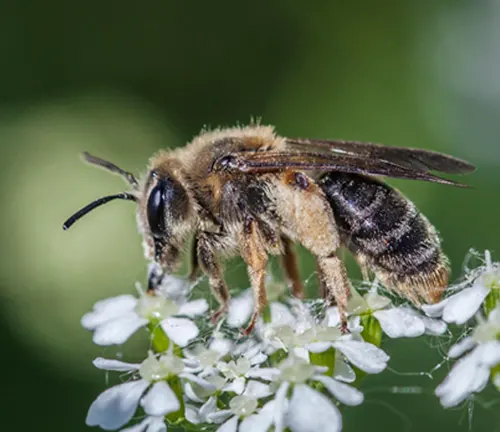
Challenges Facing Bees and Pollination
Pesticides and Chemicals
The use of pesticides and chemicals in agriculture poses a significant risk to bees, undermining their health and pollination efficiency. These substances can disrupt bees’ navigation and foraging behavior, leading to reduced pollinator populations and compromised plant reproduction, including that of crucial agricultural crops. The resulting decline in bee pollination can adversely affect biodiversity and global food security, underscoring the need for sustainable farming practices that safeguard these essential pollinators while managing pests.
Habitat Loss
Urbanization and agricultural expansion lead to significant habitat loss, threatening bee populations and their vital pollination roles. As natural areas give way to cities and monocultures, bees lose the diverse floral resources and nesting sites they need, resulting in decreased foraging opportunities and habitat fragmentation. This not only impacts bee health and diversity but also compromises the pollination of wild and cultivated plants, affecting ecosystem health and food production. Addressing this issue requires targeted conservation efforts to preserve and restore bee habitats, ensuring the sustainability of their essential pollination services.
Climate Change
Climate change disrupts the timing of flower blooming, leading to a misalignment between bees and their pollination schedules. This shift can cause bees to become active when their food sources, the flowers, are not yet available, resulting in a lack of pollination for plants. Such asynchrony threatens plant reproduction, ecosystem stability, and bee survival, as bees struggle to find adequate nourishment. Addressing the impacts of climate change on this critical pollination timing is essential for maintaining ecological balance and biodiversity.
The Global Impact of Bee Pollination
Agricultural Benefits
Bees play a vital role in agriculture by pollinating numerous crops, directly contributing to global food security. Their pollination work enhances crop yields, quality, and diversity, ensuring a stable and varied food supply. This not only boosts agricultural productivity but also supports the nutritional needs of populations worldwide, highlighting the indispensable role of bees in sustaining both the agricultural economy and global food systems.
Biodiversity and Ecological Balance
Bees are pivotal in maintaining ecosystem balance and biodiversity through their pollination of diverse plants. This activity ensures plant reproduction, fostering a rich variety of flora that supports various wildlife and stabilizes ecosystems. The interconnected web of life, from small insects to larger animals, relies heavily on the plants bees pollinate for food and habitat. Consequently, the health and abundance of bee populations are crucial for ecological health, highlighting the importance of safeguarding bees to preserve the natural balance and diversity of our environment.
Related Topics
- Why Are Bees Important? Examining Their Critical Role in Biodiversity and Crop Pollination
- How to Start a Beehive: Essential Tips for Aspiring Beekeepers
Conclusion
The future of bees and their pollination role is crucial for global biodiversity and food security, transcending the concern for a single species to encompass the broader ecological fabric of our planet. Bees are integral to the pollination of numerous plants, affecting food production and ecosystem health. Their decline due to habitat loss, pesticides, and climate change threatens not just bees but the entire web of life that depends on them, including humans. Addressing this global issue requires collective action to protect bee habitats, reduce pesticide use, and mitigate climate change, ensuring the survival of bees and the essential ecological services they provide.
FAQs
- Why are bees considered key pollinators?
Bees are key pollinators because they facilitate the reproduction of many flowering plants, including those that produce fruits, vegetables, and nuts crucial to human diets. - What is ‘buzz pollination’, and which bees perform it?
Buzz pollination is a technique where bees vibrate their bodies at a high frequency to dislodge pollen more effectively. Bumblebees are particularly known for this method. - How does climate change affect bee pollination?
Climate change can alter the timing of flowering in plants and the activity patterns of bees, disrupting their crucial pollination partnership. - What can individuals do to help bees and promote pollination?
Individuals can plant bee-friendly gardens, reduce pesticide use, and support conservation efforts to create and maintain habitats for bees. - How does bee pollination benefit agriculture?
Bee pollination increases the quantity and quality of agricultural produce, ensuring the availability of a wide variety of foods and contributing to global food security. - What are solitary bees, and why are they important?
Solitary bees are species that do not live in colonies but operate independently. Each female solitary bee builds her own nest and collects pollen and nectar for her offspring. Despite their solitary nature, they are incredibly efficient pollinators, often more so than honeybees, making them crucial for the pollination of certain plants and crops. - Can bees pollinate all types of flowers?
While bees are versatile pollinators, not all flowers are suitable for bee pollination. Bees typically pollinate flowers that are open and accessible, with landing platforms and bright colors. However, some plants have evolved to be pollinated by other means, such as wind, birds, or specific insects other than bees. - What role do bees play in biodiversity?
Bees contribute significantly to biodiversity by pollinating a wide range of plants. This pollination supports the growth of fruits, seeds, and nuts, which serve as food sources for various wildlife. The diverse plant life resulting from bee pollination also provides habitats for countless other species, contributing to a balanced and resilient ecosystem. - How do pesticides harm bees?
Pesticides can harm bees in several ways, including direct poisoning, sublethal effects that impair foraging and navigation, and weakened immunity making bees more susceptible to diseases and parasites. Certain pesticides, such as neonicotinoids, are particularly harmful as they can be absorbed by plants and contaminate pollen and nectar. - What is the economic value of bee pollination to agriculture?
The economic value of bee pollination is immense, estimated to be billions of dollars worldwide. This value is not only in the direct production of crops that rely on bee pollination but also in maintaining the health and viability of agricultural ecosystems, ensuring the continued production of a wide variety of foods. Bees help increase yields and quality, contributing significantly to the agricultural economy and food security.

Charles Hayes
Forestry AuthorI'm Charles Hayes, I bring over 15 years of specialized expertise in landscaping and woodworking, blending artistic design with sustainable environmental stewardship. My career, fueled by a profound passion for the natural world, encompasses extensive education and hands-on experience in creating harmonious, eco-friendly outdoor spaces and responsibly managing forest resources. Recognized for my professional standing, I am committed to continuous learning and certification in cutting-edge practices. My expertise is not only reflected in my work but also in my contributions to community projects, educational workshops, and collaborations with industry leaders. As an authoritative voice in my field, I strive to share knowledge and promote environmentally conscious approaches, making me a trusted resource in landscaping and forestry.




Leave your comment